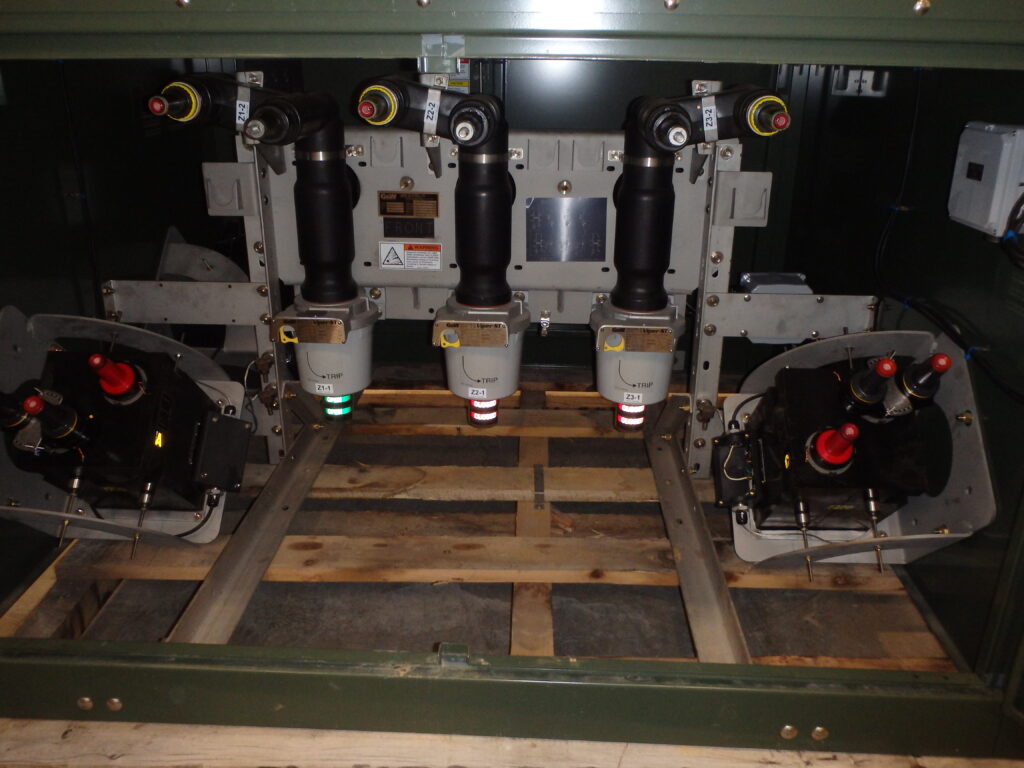Rising electricity demand, coupled with consumer expectations for uninterrupted power, continues to place significant pressure on the power grid. Extended outages are increasingly unacceptable to users who expect fast restoration of service.
Reclosers help address this challenge by automatically detecting and responding to faults. They attempt to clear temporary faults up to three times at preset intervals. If the fault is cleared, power is automatically restored, minimizing downtime and enhancing grid reliability. The primary purpose of reclosers is to reduce outage durations and improve service continuity.
Padmount reclosers are well-suited for renewable interties, urban substations, fenceless substations, and underground feeder protection applications. Additionally, they can function as breakers or tie switches, offering flexibility in system design.

What Is a Padmount Recloser?
Viper® reclosers, both pole mounted and padmount, feature a dead-front design, meaning live wires and connections are fully insulated to enhance operator safety. Padmount Viper reclosers are available either with a Z-module (front and rear access) or a C-module (front access only). Designed for seamless integration, the padmount Viper recloser allow direct dead-front terminations—eliminating the need to transition from live front terminations requiring dielectric barriers. When manual operation is required, operators can access the open/close handle easily and safely.
Padmount reclosers are best suited for urban or suburban areas where aesthetics and public safety are a priority. Also, padmount reclosers are common in residential neighborhoods, campuses, or business parks transitioning overhead lines into the underground distribution system.
Padmount Viper reclosers can be configured with up to six internal low-energy analog (LEA) voltage sensors. These configurations make them ideal for tie points in FLISR (Fault Location, Isolation, and Service Restoration) schemes and automatic transfer applications.
Controls may be housed within the main recloser enclosure or placed in an adjacent low-voltage cabinet. Either way, the padmount enclosure provides protection for the recloser and control against weather, dust, and wildlife intrusion.
What is an Overhead Recloser?
Temporary faults that occur on overhead distribution lines can be cleared by a recloser on a pole. The overhead recloser automatically opens and then recloses the circuit after the fault. The recloser will attempt to clear the fault up to three times at predetermined intervals. Once the fault has been cleared, the power is restored automatically. The purpose of overhead reclosers is to reduce outage times and provide reliable power. Overhead reclosers are easily integrated into SCADA or other automated switching systems.
Comparing Padmount to Overhead Recloser Applications
Space Constraints
Padmount reclosers are installed at ground level so the view isn’t obstructed such as in urban or suburban areas. The small footprint and dead-front design of enclosed padmount reclosers makes it ideal for commercial, industrial, and residential areas.
Maintenance
The solid dielectric insulation of the Viper padmount and overhead reclosers eliminates routine maintenance and the associated costs.
Safety
The low profile padmount Viper recloser allow direct dead-front terminations—eliminating the need to transition from live front terminations requiring dielectric barriers. When manual operation is required, operators can access the open/close handle easily and safely. Being at ground level reduces the risk of arc flashes affecting the surrounding area.
Viper overhead reclosers offer a dead-front design for operator safety and wildlife protection. In addition, wildlife protectors are available to eliminate contact with live connections for wildfire mitigation.
Environmental Considerations
The enclosed padmount recloser is protected from dust, weather, and animals. Installed at ground level for aesthetic reasons the small footprint of a padmount recloser is ideal for urban or suburban locations.
Overhead reclosers are used in rural and industrial applications on existing distribution systems. Pole mount reclosers can be installed in rough terrain areas, such as mountains or swamps. Viper reclosers can be designed to withstand category 4 hurricane winds.
Key Factors to Consider When Choosing Padmount Reclosers
The Viper solid dielectric reclosers incorporate advanced technology to deliver reliable overcurrent protection for power systems up to 40.5kV. Padmount Viper Reclosers are designed for renewable interties, substations, fenceless substations, and underground feeder protection applications.
- Reliability – Designed to withstand fault conditions and maintain operational continuity
- Compact and Lightweight – Small ground footprint and low profile
- Safety – Dead-front construction enhances operator and public safety
- Security – Enclosure shields against weather, dust, and animal contact
- Automation Compatibility – Easily integrates with distribution automation systems for remote monitoring and control
- Cost-Effective – Long service life, simplified installation, and reduced maintenance
By combining electronically controlled vacuum fault interrupters with the environmentally friendly and solid dielectric insulation of Viper padmount reclosers, G&W Electric offers utilities a safe, proven, and cost-effective solution for modern power distribution networks.
FAQs
How do Viper padmount reclosers improve fault isolation?
Padmount reclosers isolate a fault the same way as overhead reclosers through sectionalizing the line to the nearest overcurrent protection device. They can also provide single-phase protection for underground feeds into a subdivision that does not require three-phase protection.
Where should a padmount recloser be installed?
- Distribution network transition points from underground lines to overhead lines.
- Distribution network entrance points to a subdivision.
- Urban substations and fenceless substations.
- Renewable intertie points (wind/solar/thermal).
What are the benefits of using an overhead recloser in rural areas?
- Lower cost.
- Easily installed using common co-op construction standards.
- Protect long overhead lines that are susceptible to temporary faults, such as galloping lines, swaying tree limbs or wildlife contact.
- Provides sectionalizing and fault location capabilities to localize and identify where faults are occurring.
